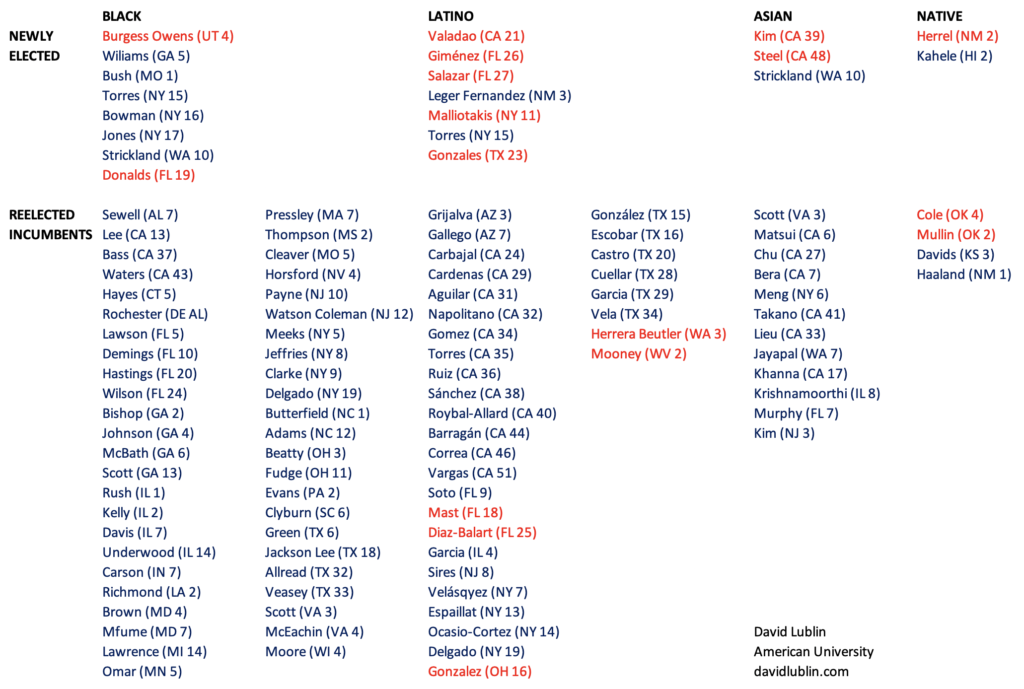Note: This is a first cut at the data. If you catch any errors or omissions, please let me know. I have updated the original post to include Rep. Nicole Malliotakis (NY 11).
The total number of Black, Latino, Asian and Native American Members of Congress elected in 2020 is 111, or 25.5% of the membership. These numbers exclude non-voting members from D.C. or the territories.
In a departure from previous Congresses, one-half of new minority members will sit as Republicans–10 of 20. Among Latinos and Asians, the total number of Democrats is down while the number of Republicans is up. African and Native Americans saw gains in members from both parties.
African Americans
The 55 African Americans will compose 12.6% of the U.S. House as compared to 12.5% of the total population that was estimated as non-Hispanic Black (one race) by the Bureau of the Census in 2019. The total number of Black representatives is four higher than elected in 2018. All but two of the members elected in 2020 are Democrats, a net increase of three Democrats and one Republican.
Latinos
The 39 Latinos will form 9.0% of the U.S. House compared to an estimated 18.5% of the total population. There is no change in the total number of Latino representatives but there is a shift in the partisan breakdown. While there were just six Latino Republicans in the old Congress, the new Congress will have ten. Correspondingly, the 27 Latino Democrats elected in 2020 represent a decline of three from the 30 who won in 2018.
Asian Americans
The 15 Asian American elected will comprise 3.4% of the House but non-Hispanic Asians (one race) are an estimated 5.9% of the total population. This year’s elections produced a net gain of one Asian representative over 2018. While all elected in 2018 were Democrats, two elected in 2020 are Republicans. The number of Asian Democrats is down one.
The greater under representation of Latinos and Asians is not surprising in light of the much higher rates of non-citizenship. Latinos and Asians who are citizens are especially highly concentrated among the non-voting under 18 population as well as younger voters, who tend to participate at lower rates than older voters in all racial and ethnic groups.
Note that, following convention, Asian includes only East and South Asian here. As a result, the count excludes one Arab American and one Iranian American who are newly elected or returning after a gap in service. Both are Republicans.
Native Americans
There will be six Native American U.S. House members in the new Congress. They will be 1.4% of the U.S. House as compared to an estimated 1.5% of the total population. The population numbers include Native Alaskans, Hawaiians and other Pacific Islanders as well as Native Americans.
The total number of Native American representatives is up by two in 2020. The incoming Native American Members of Congress, including one Native Hawaiian, are split evenly between the two parties, as was the case in 2018.
Members Counted Twice
Four representatives fall into more than one of the above categories, so the totals summed from each category are higher than the overall total of 110 minority representatives. New York Reps. Ritchie Torres and Antonio Delgado are Afro-Latino. Similarly, Virginia Rep. Bobby Scott and Washington Rep. Marilyn Strickland are Afro-Asian.
Minority Members of Congress

